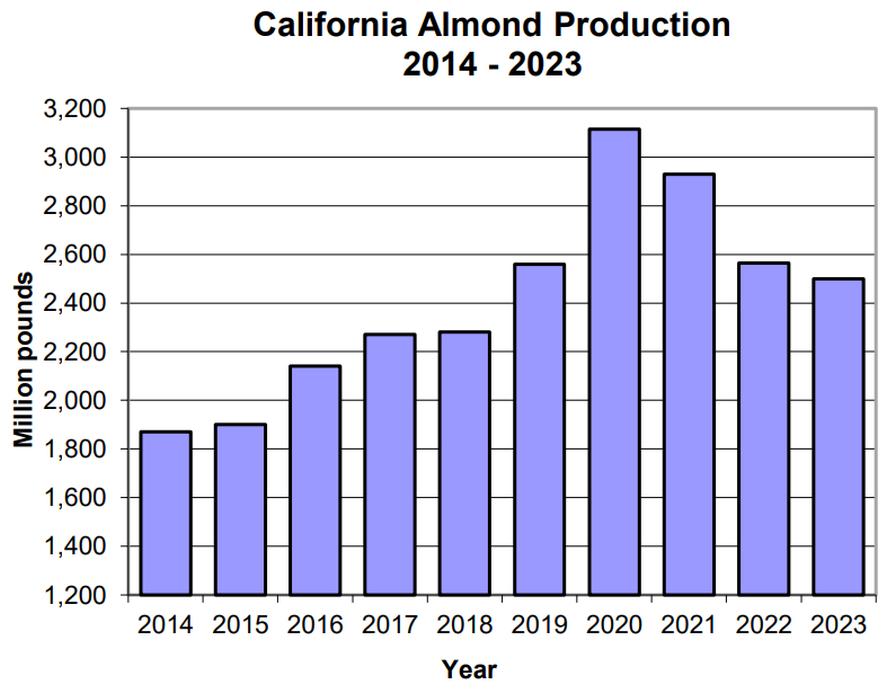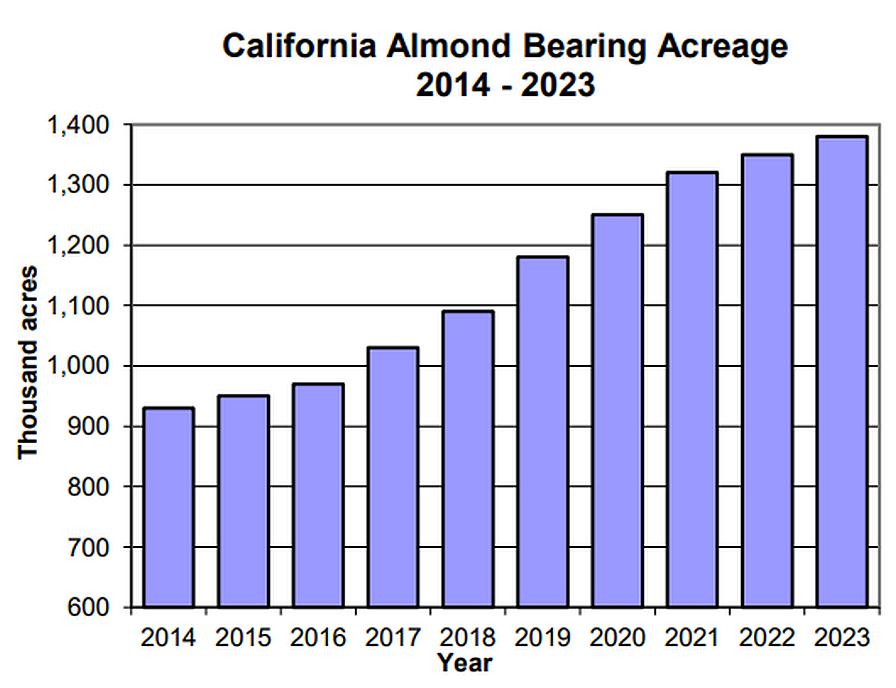What Is the 2023 California Almond Crop Forecast Looking Like So Far?
USDA’s National Agricultural Statistics Service (NASS) Pacific Regional Office has released its initial subjective forecast for 2023 California almond production. At first glance, numbers are down. To no surprise, the wild weather affecting the Golden State over the last few months is playing a major factor in the figures.
The 2023 California almond forecast highlights include:
- Production at 2.5 billion pounds, 3% below last year’s final production of 2.57 billion pounds.
- Almond bearing acres at 1,380,000, 2% above the 2021 bearing acreage of 1,350,000.
- Yield at 1,810 pounds per acre, down 90 pounds from last year, and the lowest since 2005.
According to the government agency: “Record rainfall and unprecedented stormy conditions impacted pollination. Limited bee flight hours were reported in all growing regions. There were reports of downed trees due to high winds and oversaturated soil.
“Yields are expected to be the lowest in years, with variation observed across varieties and orchard locations.”

Graphic courtesy of USDA NASS

Graphic courtesy of USDA NASS
In addition, colder than normal temperatures persisted through March and April, resulting in a delayed crop. Growers are still evaluating their orchards for disease and applying fertilizer and pest control treatments as needed.
In the biggest contrast compared to recent years, water availability is not a major concern.
“A lower crop estimate was not unexpected considering all that growers dealt with last year and during this year’s bloom,” says Richard Waycott, President and CEO of the Almond Board of California. “In the past three years, growers have faced high costs, shipping issues, drought, and more. But the water picture is better, at least for this year, shipping continues at record levels, and global demand continues to grow. California’s almond farmers are prepared to meet that global demand.”
USDA NASS states the subjective production forecast is based on a survey conducted from April 19 to May 6 from a sample of 500 almond growers. Respondents had the option of reporting their data by mail, online, or phone.









